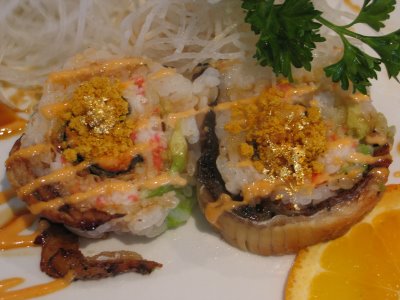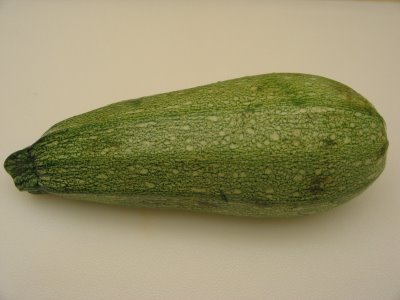
Are you surprised, as I am, by the explosion of sushi restaurants in Southern California? Do you remember, as I do, the days when the only real sushi you could get was in so called ethnic neighborhoods? Do you remember also, as I do, the sense of mild disgust you elicited from most white folks if you were to mention raw fish? And finally, do you remember, as I do, the first time you realized that what people referred to as sushi was, in fact, that peculiarly American invention, the California roll?
Well, fear no more. These days, it seems that there's a joint in every little strip mall in LA that more or less claims to serve sushi. Heck, you can even find "sushi" in your neighborhood grocery store. Of course, much of this is attributable to the rise in American culinary sophistication or healthy eating that those with acute business acumen have been happy to oblige. The quality of these joints is, however, pretty uneven and many of them, especially those catering to indiscriminating lunch clients, can't really be called sushi restaurants as much as California roll machines with teriyaki selections.
The
Octopus in Encino is not one of them. The restaurant opened in December and seems to be establishing a growing customer base through the word of mouth. It is one of the larger Japanese restaurants in the area and has a conveniently
large parking lot, a very important factor for me. The decor is calm and minimalist and the service is above acceptable. Its clientele ranges from knowledgeable connoisseurs of Japanese cuisine to vegetarians which says much for the menu's wide range.
This restaurant is part of a group of Japanese restaurants that the owner and his partner own and operate. This is notable only for the fact that they buy a large quantity of fish for all of their restaurants and therefore are able to receive a quantity discount that is passed down to the customer. Thus the sushi at Octopus is (almost) obscenely big at a rather inexpensive price. And I even know where the fish comes from.
Several years ago, I followed a family friend to the wholesale fish market in downtown, the
Pacific Fish Market. She knew a sushi chef who let us come along to buy fish at wholesale price. The Market is only open to professionals and retailers, I believe. There I saw boxes packed up for various restaurants in town, including the venerable Nobu. Yeah, Octopus gets the same fish as the Nobu. And if you're having sushi -- not the Japanese-South American fusion that the famous chef famously creates - you are having the same food without the heart-attack-inducing prices at Nobu.
I don't know if that's still true but it was three years ago. Of course, you're thinking that the freshness of the fish depends on what happens at the restaurant and you're right. The fish at Octopus is kept fresh with mechanical precision and once they're past their time, the fish is thrown out promptly.
I'm especially fond of
uni (sea urchin; here it comes from Santa Barbara) and
mirugai (giant clam) but all sushi is good there. Once you've experienced good uni melting in your mouth, you look at other food with a bit of contempt --or, is it just me? Here you can enjoy them without breaking your bank account. (Have you read the Masa review in NY Times? Yikes!)
If you're not into raw or are pregnant, the teriyaki, gyoza or bbq ribs are the way to go. If you are cold, the hot udon will do you good. If you are part of a large group and need a refreshing palate cleanser, get the Seafood Pasta - sort of like ceviche - which has sashimi on top of udon noodles and greens in citrus scented sesame oil dressing. It's a lot of food for one or two people but if you share with a large group, it's perfect. For rolls, I'd try the Camarillo, which has spicy tuna inside and albacore tuna, ikura, and sliced onions on top.
Final note: The restaurant bills its cuisine as fusion but I'd recommend sticking to the traditional fare. I'm not fond of fusion cooking, whatever that means. (Addendum: On second thought, some of their fusion-al creations can be really good. Stay tuned.) Great sushi is what you're getting there so stay with that. Or, eat whatever appeals to you.

Here are some things we ate at Octopus. Yum!
Octopus, 16733 Ventura Blvd., #1, Encino 91436. 818.380.0855
Other sushi restaurants I recommend are:
Hide Sushi on Sawtelle in West L.A. No reservations.
Arado in Koreatown on Wilshire and Wilton (The best sushi in Koreatown)
*
Addendum: Feb. 13, 2004: Need kamasutra for your valentine? I went back to the Octopus several times after my the above post, enjoyed each meal immensely, and would like to share a new dish the restaurant is considering to put on its menu. Although I've stated my dislike for "fusion" in general --
JP and I have the same view -- this new creation actually worked for me although the gold on top was bordering on uber-decadence, more than I need in food. Gold, you ask? Yes, gold.
This sushi roll is going to be called "Kamasutra," which is sure to pique interest, I suppose. It is a salmon skin, shrimp(I think or my memory fails me), avocado roll with eel wrapped around it, a dollop of curry powder on top, and (drumroll, please) a little smidgeon of gold (yes, real gold) on top. M and I thought the name required an oyster on the side, but I don't know if that's going to be. The chef thought that since curry is most often associated wth India --> India created Kamasutra --> these ingredients promote health and pleasure --> hence the name. It tastes great, so I really don't care about the name. The dab of curry powder provides a nice jolt of unexpected flavor; the gold is neither here nor there but it looks fabulous and I love great looking food as much as the next person.

Here's a photo of it.
 By now you've probably heard about the unusual weather we're having in Southern California. Except for the massive traffic congestion the rain causes in this region, I rather like rain. I like the sight and sound of rain drops falling and the fresh smell it brings after it's gone. That freshness is pretty rare in this car crazy town so it's a change I welcome. Besides, it's the perfect time to cozy up to the TV, book or anything comforting with a hot cup of tea and your favorite comfort food.
By now you've probably heard about the unusual weather we're having in Southern California. Except for the massive traffic congestion the rain causes in this region, I rather like rain. I like the sight and sound of rain drops falling and the fresh smell it brings after it's gone. That freshness is pretty rare in this car crazy town so it's a change I welcome. Besides, it's the perfect time to cozy up to the TV, book or anything comforting with a hot cup of tea and your favorite comfort food.


 Feb. 16: And because I can't say enough about my most delightful niece, here's the cute sign she made for her cupcakes at my office. She had the day off from school, which seems a little strange to me, so she hung out at my work for few hours in the morning. My colleagues were quite happy with their "breakfast"! I found my niece a portable white board and she was having so much fun (playing school!) that she hated to leave when her mom came by to pick her up at lunch time. Not a bad Valentine's day.
Feb. 16: And because I can't say enough about my most delightful niece, here's the cute sign she made for her cupcakes at my office. She had the day off from school, which seems a little strange to me, so she hung out at my work for few hours in the morning. My colleagues were quite happy with their "breakfast"! I found my niece a portable white board and she was having so much fun (playing school!) that she hated to leave when her mom came by to pick her up at lunch time. Not a bad Valentine's day.

 An infomercial on TV was advertising it with the name, "Magic Bullet," but I got mine years ago in Koreatown for like $20. Mine came with several containers of different sizes. I use one to grind coffee beans and the rest for other smells, such as garlic and onion. I suppose you could use a regular blender but the amount needed to puree for this is perhaps too small for a regular sized blender.
An infomercial on TV was advertising it with the name, "Magic Bullet," but I got mine years ago in Koreatown for like $20. Mine came with several containers of different sizes. I use one to grind coffee beans and the rest for other smells, such as garlic and onion. I suppose you could use a regular blender but the amount needed to puree for this is perhaps too small for a regular sized blender. 

 Here are some things we ate at Octopus. Yum!
Here are some things we ate at Octopus. Yum! Here's a photo of it.
Here's a photo of it.